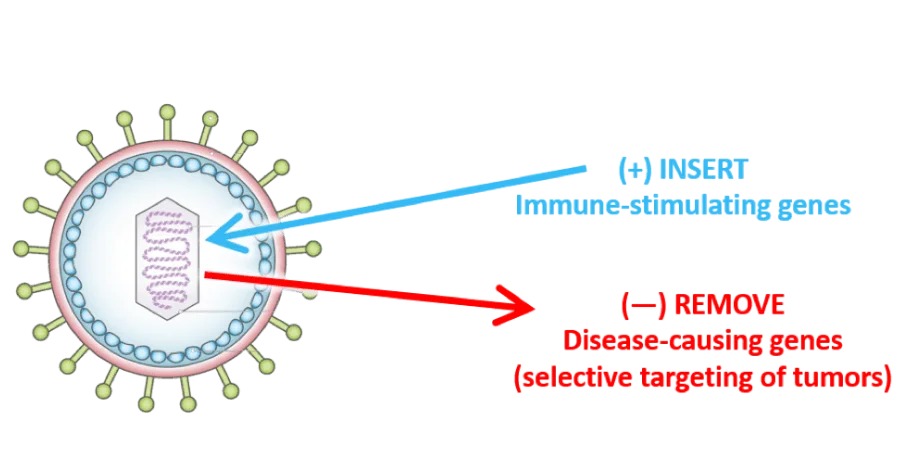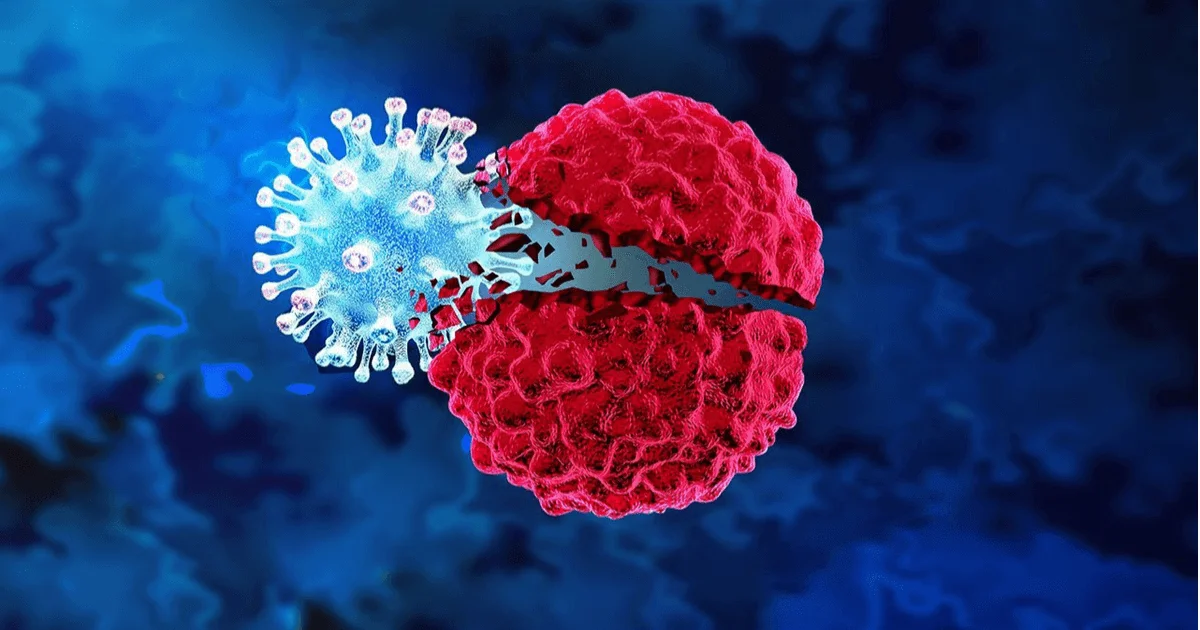Oncolytic viruses are a form of immunotherapy that uses viruses to infect and destroy cancer cells.
Viruses are particles that infect or enter our cells and then use the cell’s genetic machinery to make copies of themselves and subsequently spread to surrounding uninfected cells. Infection by certain viruses has been implicated in the development of certain cancers, such as the hepatitis B virus (HBV) in liver cancer and the human papilloma virus (HPV) in cervical cancer and head and neck cancer. (In the case of HPV and hepatitis, another type of immunotherapy—cancer vaccines—has shown the ability to prevent infection and protect against the formation of these HPV- and HBV-related cancers.)
More recently, viruses have been used to target and attack tumors that have already formed. These viruses—some, but not all, of which have been modified—are known as oncolytic viruses and they represent a promising approach to treating cancer for several reasons:
- Cancer cells often have impaired antiviral defenses that make them susceptible to infection.
- These natural viruses can be engineered to give them advantageous properties, including decreasing their ability to infect healthy cells as well as granting them the ability to deliver therapeutic payloads specifically to tumors and produce immune-boosting molecules once they infect tumor cells.
- After infection, these oncolytic viruses can cause cancer cells to “burst”—killing the cancer cells and releasing cancer antigens. These antigens can then stimulate immune responses that can seek out and eliminate any remaining tumor cells nearby and potentially anywhere else in the body.

In 2015, the U.S. Food and Drug Administration (FDA) approved the first oncolytic virus immunotherapy for the treatment of cancer—T-VEC for melanoma. This treatment involves a herpes virus that has been engineered to be less likely to infect healthy cells as well as cause infected cancer cells to produce the immune-stimulating GM-CSF protein.




